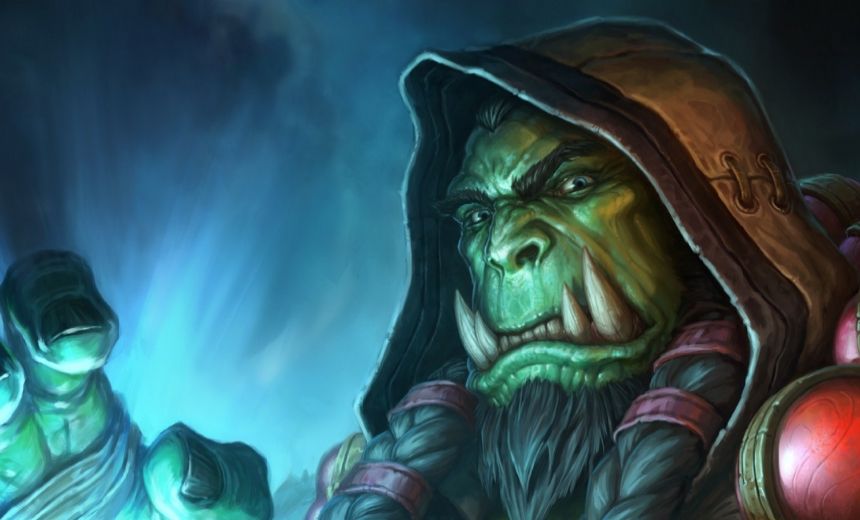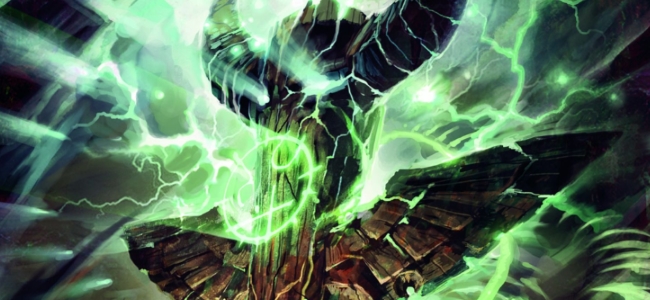
With over a month of the new meta behind us, there are some new decks which have proven themselves to be meta-viable. Shamans, who our readers recently voted to be the strongest class in the game right now, are lucky enough to possess not one but two of them. Aside from the ever-popular Aggro build, a refined Midrange list has made its way into the upper echelons of the ladder, one Tempo Storm even went as far as to name the strongest overall deck in their latest Meta Report. In this guide, we're going to have a look at the core decklist, strategies as well as match-ups and tech variations for Thrall's slower arsenal.
The decklist presented here is the Totem variant, which Xixo shared in a tweet at the beginning of last season. I've had great success with this list and so have many other players apparently. While it was once considered an "off" version of Midrange Shaman, the totem-heavy variant is now seen as the main version of the deck by many players. The deck possesses the same powerful early game as Aggro Shaman, but the more valuable midgame options allow players to close out slower games as well, way past the point at which an Aggro list would have fizzled out.
General strategy
Midrange Shaman aims to get on the board as early and as strongly as possible, (ab)using the absurd early game Shamans have at their disposal in the Standard meta. It rivals even that of pre-Standard Paladins, with many players arguing that it might be considered stronger than Uther's legendary combo of [card]Secretkeeper, [card]Shielded Minibot[/card] and [card]Muster for Battle[/card]. An opening of [card]Tunnel Trogg[/card] (or two with The Coin) into [card]Totem Golem[/card] can snowball out of control in its own right, while following with another [card]Totem Golem[/card] or a coined [card]Tuskarr Totemic[/card] or [card]Feral Spirit[/card] should all but cement an early lead.
It is at this point where Aggro and Midrange diverge. While Aggro focusses on pushing as much face damage as possible, Midrange takes a more controlling approach, making sure to keep its board presence while limiting the opponent's. As with most midrange decks, the hardest part of playing it is finding the exact point in the game where you start valuing face damage over board control, partly due to the Midrange list's lack of reach. Doomhammer plus Rockbiter Weapon still allows us to swing for ten damage from an empty board, but most other sources of direct damage are removed from the list in favor of more valuable options such as [card]Thunder Bluff Valiant[/card] and [card]Thing from Below[/card], which means our win condition has to be the board. Whether through a burst attack with [card]Bloodlust[/card] or steady outvaluing of the opponent, Midrange Shaman will rarely win a game without establishing a dominant board presence before.
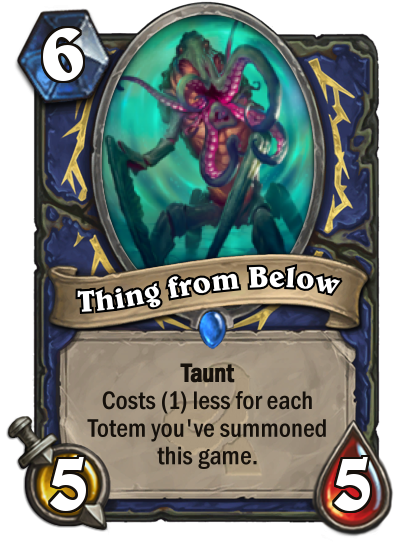
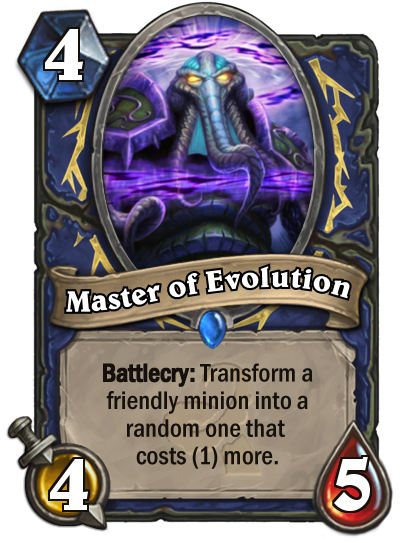
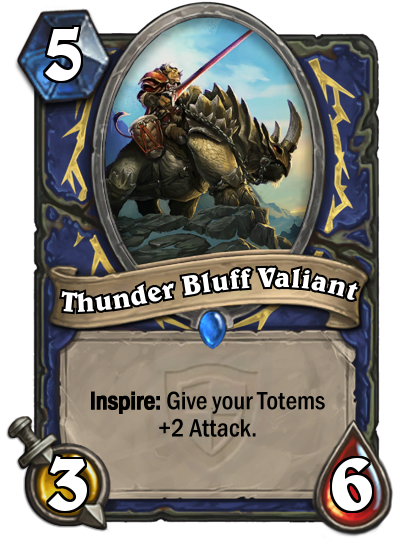
The list presented above allows the player to establish that board presence at several points in the game, which is one of the main advantages Midrange Shaman has over other decks. Even if you end up losing the early game or get your board wiped by AoE spells, a well-timed [card]Lightning Storm[/card] followed by a cost-reduced [card]Thing from Below[/card] can make for a strong swing turn. If your opponent clears the board but can't create a board presence of his own, even a single card (say, [card]Tuskarr Totemic[/card]) can potentially create a veritable board when combined with Shaman's Hero Power. Unlike the Aggro build, Midrange does not typically run [card]Sir Finley Mrrgglton[/card], as its Hero Power synergizes well with various cards in the deck and helps to provide the board presence we need.
Two [card]Mana Tide Totem[/card]s provide the necessary card draw whilst synergizing with the various Totem buffs in the deck. They should not be played on curve (in a situation where you miss your 3-drop, using your Hero power plus a 1-drop is almost always preferable) but instead enter the field around turns five to six, preferably behind a taunt. Since you will often find yourself overloaded on turn three due to [card]Totem Golem[/card] anyway, [card]Mana Tide Totem[/card] should typically be mulliganed away if it ends up in your starting hand. [card]Primal Fusion[/card] can be used to make it more durable, although the player has to be careful about dumping cards into a [card]Mana Tide Totem[/card] on the same turn it is played, as it allows hard removal such as [card]Shadow Word: Pain[/card] to gain extra value. I found that in games where I managed to keep one (nevermind two!) [card]Mana Tide Totem[/card]s alive over several turns, my winrate was above 80%, as the opponent can typically not keep up with your card advantage and will be unable to regain board control.
As the deck's gameplan is rather straight forward, there aren't many intricate plays to look out for. There are, however, certain things one should be aware of in order to pilot the deck optimally. The biggest issue when playing any Shaman deck is minion placement, which should be carefully observed with this list as well. In general, you'll want to place your strongest minions on the lefthand side of the board, while putting buffers (such as [card]Flametongue Totem[/card]) as well as [card]Tuskarr Totemic [/card] (because it, too, can spawn [card]Flametongue Totem[/card]) in the middle of the board in order to allow for optimal trading. As [card]Master of Evolution[/card] will primarily be used to transform a Hero Power totem into a 2-drop, picking the optimal target depends on both the rest of your board as well as a the usefulness of the original totem you are transforming. Since you could very well generate a [card]Dire Wolf Alpha[/card] or yet another [card]Flametongue Totem[/card] , as a general rule of thumb, you should not transform your rightmost minion, unless you can spawn a totem next to it and/or are out of options.
If you run [card]Thunder Bluff Valiant[/card] , which I highly recommend as both a means to establish board control as well as a win condition, you need to be aware that you can only trigger Inspire if you actually put a Hero Power totem on the board. This means that you will need two free spaces on your board if you haven't played him yet (one for [card]Thunder Bluff Valiant[/card] himself and one for the totem); furthermore, you cannot inspire your minions if you already have all four types of totems on the board, which happens more often than you'd think. In either of these cases, trading first usually helps you to free up a slot, thus allowing for Inspire to buff up your board.
Managing Overload is always important for Shamans, and it's key for playing this deck as well. Be aware of when your big swing turns are, as you'll typically want to avoid going into turn five overloaded (unless you're running [card]Flamewreathed Faceless[/card], see below) and from turn seven on you'll want to have seven mana available for the [card]Thunder Bluff Valiant[/card] Inspire combo. You can accomplish this with several different combos, as long as you do the math beforehand. As the deck does not run any Overload-clearing effects, using your Hero Power instead of playing [card]Feral Spirit[/card] with your remaining three mana might (sometimes!) be the better play.
Mulligans and match-ups
The Mulligan is rather straightforward since you'll be looking for your early game in almost every match-up. That means digging for [card]Tunnel Trogg[/card] and [card]Totem Golem[/card] if you didn't find them in your opening hand, whereas midgame cards such as [card]Mana Tide Totem[/card] and [card]Bloodlust[/card] should usually be tossed. You may opt to keep [card]Doomhammer[/card] against Priests and Warriors, but I would only choose to do so if I already had some early game options on hand. With The Coin, you can be a bit more liberal with your Mulligan and hold onto [card]Feral Spirit[/card] and other 4-drops as well. If you choose to include [card]Flamewreathed Faceless[/card], you should keep it in your opening hand (and may even choose to dig for it) since its impact is arguably the strongest if played on turn four. Keep [card]Hex[/card] against classes which tend to play extremely strong minions early on (such as [card]Klaxxi Amber-Weaver[/card] and [card]Flamewreathed Faceless[/card] in the mirror) and keep your board light vs. Warriors to bait Brawl. If you suspect your opponent holds AoE spells, value your Hero Power over playing another card and try to close out the game with [card]Bloodlust[/card] or [card]Thunder Bluff Valiant[/card].
Tech choices and list variations
The deck possesses a rather sizeable core, which means that there aren't many choices one can make without moving into a different archetype. A central choice is whether to run [card]Flamewreathed Faceless[/card] or [card]Master of Evolution[/card] as a 4-drop. While the 7/7 is an absolute beast on turn four, I prefer the [card]Master of Evolution[/card] as it offers more flexibility and doesn't overload you going into turn five, which I feel is an important turn in keeping/cementing board control via [card]Doomhammer[/card] , [card]Tuskarr Totemic[/card] with another 2-drop or Hero Power or other five-mana-combos.
The addition of a second [card]Lightning Bolt[/card] helps with the early game (doubling as removal and a buff for [card]Tunnel Trogg[/card]) while [card]Bloodmage Thalnos[card] could provide some cycle as well as Spellpower to guarantee three damage on [card]Lightning Storm[/card]. Other tech choices, such as weapon hate in the form of [card]Acidic Swamp Ooze[/card] or [card]Harrison Jones[/card] should only be added if they're absolutely necessary in your pocket of the meta, as the deck does not provide enough space for such additions. However, if you want to alter your deck in this fashion, removing [card]Bloodlust[/card], [card]Master of Evolution[/card] or [card]Flame Juggler[/card] are all viable options depending on what you want to add.
On top of being a very strong deck, with ten rares and only one epic, Midrange Shaman is one of the cheapest competitive decks there is. Have you tried Thrall's new arsenal? Let us know in the poll below.

